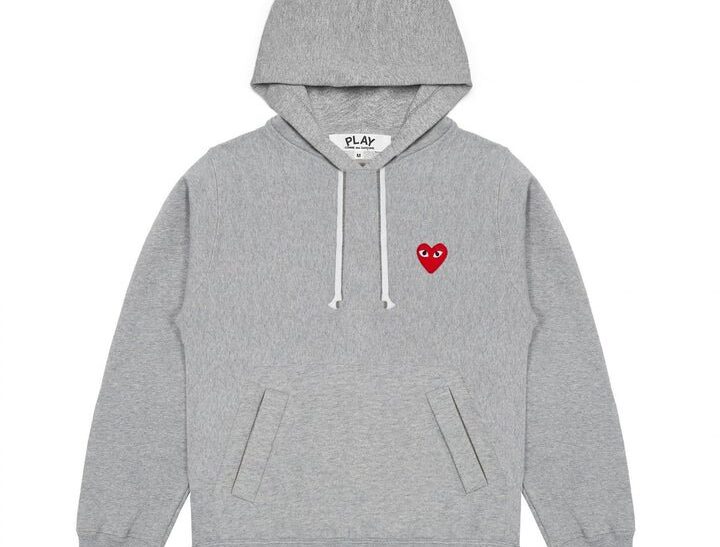Fashion has always been more than just clothing; it is a language that communicates identity, creativity, and cultural transformation. Among the few names that have consistently redefined this language, Comme des Garçons stands as a radical force. Founded in 1969 by Rei Kawakubo, the Japanese label has never conformed to the boundaries of traditional fashion. Instead, it has carved its own path, often defying conventions and embracing the abstract, the deconstructed, and the avant-garde. As the world of fashion shifts in response to technology, sustainability, and shifting cultural values, the question emerges: what role will Comme des Garçons play in shaping the future of experimental fashion?
The Legacy of Defiance
From its earliest collections, Comme des Garçons challenged the very noion of beauty. Rei Kawakubo rejected the idea of clothing as a mere tool for decoration or flattery. Instead, she viewed garments as sculptural forms capable of expressing ideas that went beyond the superficial. In the 1980s, when European fashion emphasized glamour and luxury, Comme des Garçons shocked audiences with collections that featured black, asymmetrical, and distressed clothing. These pieces seemed unfinished, raw, and sometimes even “anti-fashion,” but they sparked a revolution in how designers and consumers alike perceived clothing.
The legacy of Comme des Garçons lies in this spirit of defiance. It is a brand that does not ask permission to innovate. It experiments boldly, often dividing audiences between admiration and confusion. This willingness to provoke conversation has positioned Comme des Garçons as a leader in experimental fashion, and it continues to influence designers who seek to break free from conventional narratives.
Experimentation as Identity
For Comme des Garçons, experimentation is not a seasonal choice; it is the brand’s very identity. Kawakubo often describes her work as an exploration of “the space between.” This idea manifests in garments that blur the line between fashion and art, wearable and unwearable, beautiful and grotesque. Through her approach, she dismantles traditional fashion categories and creates pieces that challenge the body’s silhouette, sometimes exaggerating proportions or distorting familiar shapes.
This refusal to settle into predictable patterns has made Comme des Garçons a laboratory for fashion’s future. The brand’s experimentation with materials, shapes, and presentation often feels decades ahead of mainstream trends. Runway shows become performance art, where models move not just to display clothes but to embody a concept, a narrative, or even a critique of the industry itself.
Technology and Digital Expression
As the fashion industry embraces digital transformation, Comme des Garçons finds itself uniquely positioned to push boundaries even further. The rise of virtual fashion shows, augmented reality clothing, and digital garments that exist solely online opens a new playground for experimentation. For a label that thrives on conceptual expression, digital spaces provide freedom beyond fabric and thread.
Imagine a future where Comme des Garçons designs exist as both physical garments and digital avatars. The brand’s love for sculptural, avant-garde forms could find new expression in digital environments where the laws of gravity and practicality do not apply. This could create an entirely new dimension of fashion, one that challenges consumers to rethink their relationship with clothing, identity, and presence in virtual worlds.
Sustainability and Radical Responsibility
Another pressing issue in fashion’s future is sustainability. Comme des Garçons has historically been less associated with eco-conscious branding compared to some of its peers, but its ethos of timelessness and conceptual design naturally resists the culture of disposability. Unlike fast fashion, which thrives on replication and trend-chasing, Comme des Garçons produces pieces that are meant to endure in both physical form and cultural memory.
Looking ahead, the brand has the opportunity to integrate sustainability in experimental ways. Whether through innovative materials, recycling practices, or conceptual critiques of overproduction, Comme des Garçons could redefine what responsible fashion looks like without losing its avant-garde edge. Rei Kawakubo’s perspective—unbound by norms—offers fertile ground for sustainable practices that feel radical rather than prescriptive.
Cultural Influence and the Next Generation
Comme des Garçons does not just influence clothing; it shapes culture. Collaborations with brands like Nike, Supreme, and Converse have brought its avant-garde spirit into streetwear and youth culture, proving that experimentation can coexist with accessibility. These partnerships have introduced new generations to the brand’s ethos, demonstrating that radical fashion does not need to be confined to the runway.
For younger audiences who value individuality and authenticity, Comme des Garçons represents freedom from conformity. In an age when social media often amplifies sameness, the label’s commitment to disruption resonates deeply. It shows that fashion can be a tool for rebellion, self-expression, and cultural dialogue, rather than mere consumption.
Rei Kawakubo’s Continuing Influence
Even as Rei Kawakubo advances in age, her influence remains powerful. She has cultivated a creative empire, not only through Comme des Garçons but also through the Dover Street Market retail spaces, which serve as hubs for experimental designers. By giving platforms to new voices, Kawakubo ensures that the spirit of experimentation will thrive beyond her own work.
Her leadership is a reminder that innovation in fashion does not always come from chasing trends but from maintaining a vision rooted in questioning the status quo. Kawakubo’s presence continues to inspire designers who see fashion as more than commerce, encouraging them to view it as a medium for exploration and artistic integrity.
The Future of Experimental Fashion
As fashion moves further into uncharted territories, the role of Comme des Garçons will likely remain pivotal. The brand is not merely adapting to change; it has always been a catalyst for it. Whether through digital garments, sustainable practices, or radical collaborations, Comme des Garçons will continue to challenge definitions and expectations.
The future of experimental fashion will not be about perfecting beauty or following trends. Instead, it will be about questioning, disrupting, and imagining. Comme des Garçons embodies this philosophy, offering a blueprint for how fashion can remain relevant and provocative in a world increasingly defined by speed and uniformity.
Conclusion
Comme des Garçons is more than a fashion brand; it is a philosophy of experimentation, disruption, and fearless creativity. Its past demonstrates a refusal to conform, its present continues to challenge, and its future promises to redefine the very boundaries of fashion. In a world where many brands chase the safety of mass appeal, Comme des Garçons chooses risk, contradiction, and revolution. This is why it will always remain at the forefront of experimental fashion, guiding the industry into a future where clothing is not just worn but questioned, experienced, and reimagined.










